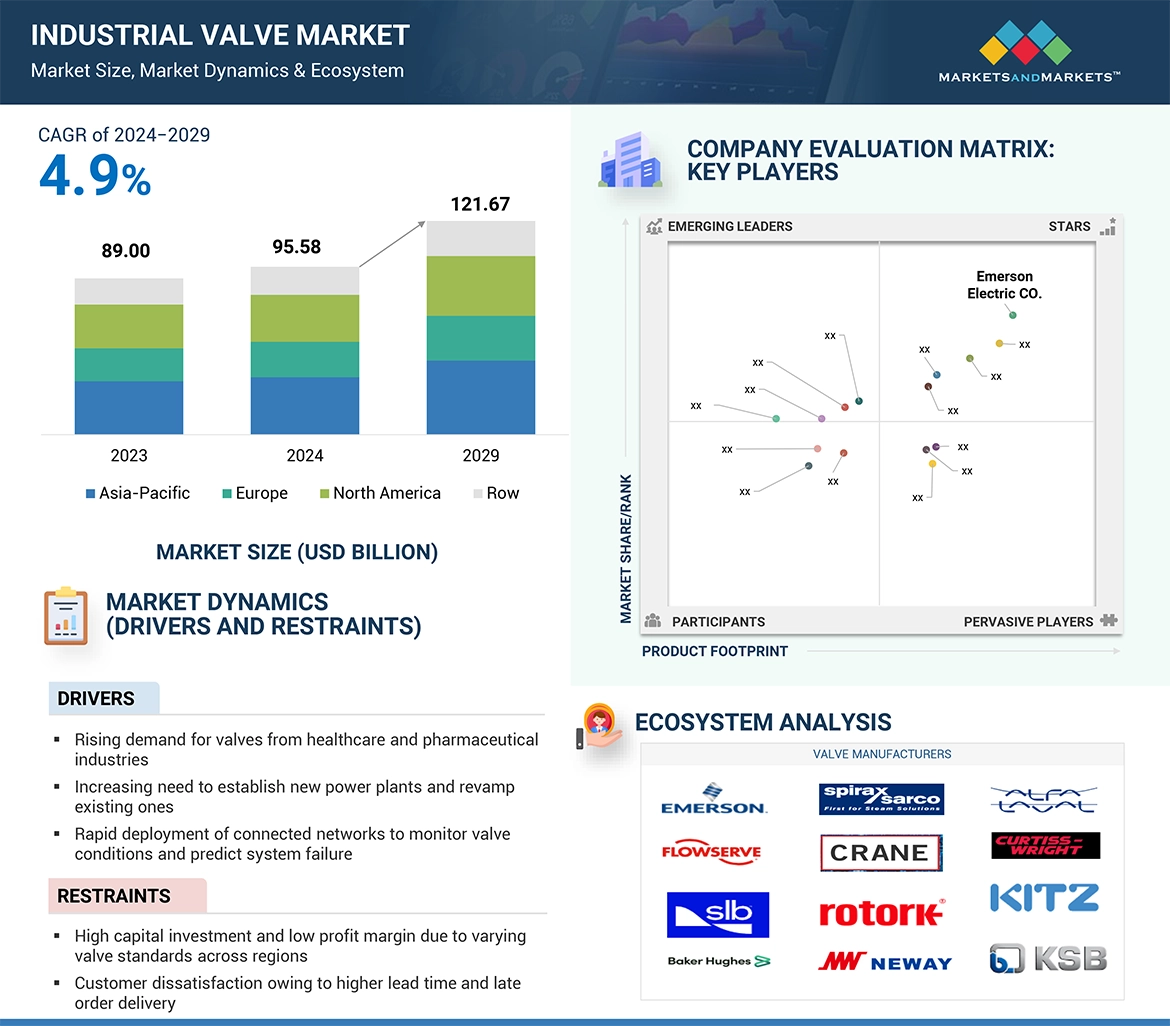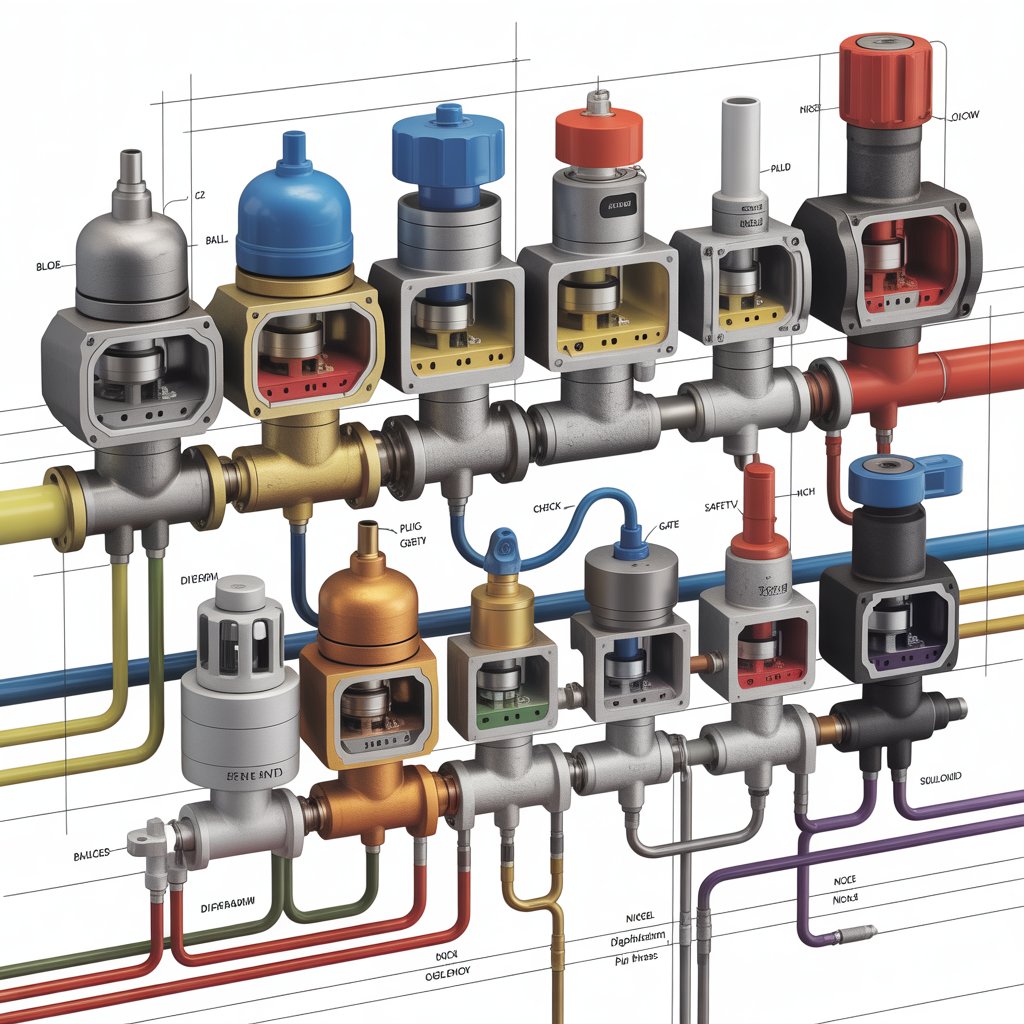The Industrial Valve Market is witnessing a profound transformation as digital technologies like Supervisory Control and Data Acquisition (SCADA) systems and digital twins reshape the operational and maintenance paradigms of industrial infrastructure. Traditionally, valves have served as mechanical devices for controlling the flow of liquids, gases, and slurries across industries such as oil and gas, water treatment, power generation, and chemicals. However, as industries embrace digitalization and the Industrial Internet of Things (IIoT), the integration of valves with SCADA systems and digital twins is ushering in an era of intelligent monitoring, predictive control, and real-time optimization.
Download PDF Brochure @ https://www.marketsandmarkets.com/pdfdownloadNew.asp?id=256097136
The Digitalization of Valve Operations
The integration of SCADA systems into valve operations marks a key step in the evolution toward smart industrial processes. SCADA systems enable centralized monitoring and control of valves, pumps, and pipelines by collecting data from sensors and actuators distributed throughout an industrial facility. This integration provides operators with real-time visibility into valve performance, pressure levels, and flow rates, ensuring more accurate process control and improved safety. With digital connectivity, operators can remotely manage valve operations, perform diagnostics, and respond swiftly to anomalies—reducing the risks of downtime and operational inefficiencies.
Digital twins further amplify this digitalization by creating virtual replicas of physical valve systems. These digital counterparts simulate real-world behaviors, enabling engineers to analyze valve performance under different operational conditions. By using predictive analytics and real-time sensor data, digital twins can forecast potential failures, optimize maintenance schedules, and extend equipment lifespan. This predictive capability transforms valve management from reactive to proactive, minimizing unplanned shutdowns and improving reliability across industries.
SCADA and IIoT Integration Enhancing Efficiency
The fusion of SCADA and IIoT is enabling industries to transition from isolated automation systems to fully integrated and interconnected networks. In this ecosystem, valves are equipped with smart sensors that transmit data continuously to SCADA systems. The data is then processed using analytics tools to monitor pressure, temperature, and flow variations in real time. Such integration allows industries to automate routine valve adjustments, ensuring consistent performance and maintaining process parameters within optimal ranges.
In sectors like oil and gas and water treatment, SCADA-enabled valves are crucial for remote operations where manual intervention is limited. Pipelines, for example, stretch across vast distances, and SCADA systems allow centralized control centers to monitor and manage thousands of valves simultaneously. Any irregularity, such as leakage or pressure deviation, can be detected instantly and corrected remotely, significantly reducing operational risks and response time. This digital control infrastructure enhances overall efficiency, reduces maintenance costs, and strengthens process safety—an essential consideration in critical industries.
Inquiry Before Buying @ https://www.marketsandmarkets.com/Enquiry_Before_BuyingNew.asp?id=256097136
Digital Twins: Transforming Predictive Maintenance
Digital twins are rapidly becoming a cornerstone of industrial valve management, offering unprecedented visibility into system performance. By combining real-time data from sensors with historical operational data, digital twins can identify wear patterns, predict failure points, and recommend corrective actions before a breakdown occurs. This capability minimizes unexpected downtime, lowers repair costs, and optimizes the total cost of ownership for industrial equipment.
For instance, in the power generation industry, digital twins simulate valve behavior under different load conditions, enabling operators to predict how valves will respond during peak demand or maintenance cycles. This insight ensures that maintenance is carried out precisely when needed, avoiding both premature servicing and catastrophic failures. Moreover, digital twins facilitate continuous improvement by feeding operational insights back into design and engineering processes, leading to better-performing and longer-lasting valves.
Market Growth and Opportunities
The integration of SCADA and digital twins is driving substantial growth opportunities in the global industrial valve market. As industries increasingly prioritize operational efficiency, safety, and sustainability, the demand for smart and connected valves continues to rise. Market players are investing heavily in developing advanced valve technologies with embedded sensors, wireless communication modules, and AI-driven analytics capabilities.
Regions such as North America, Europe, and Asia-Pacific are witnessing significant adoption, driven by modernization initiatives in oil and gas infrastructure, water management systems, and energy sectors. The growing focus on Industry 4.0 and digital transformation across manufacturing and process industries is further accelerating the deployment of smart valve systems.
View detailed Table of Content here – https://www.marketsandmarkets.com/Market-Reports/industrial-valve-market-256097136.html
Future Outlook: A Connected Valve Ecosystem
Looking ahead, the future of the industrial valve market will be shaped by greater connectivity and data-driven intelligence. The convergence of SCADA, IIoT, and digital twin technologies will pave the way for autonomous valve systems capable of self-diagnosis, adaptive control, and seamless integration into larger industrial networks. Cloud computing and edge analytics will further enhance data processing capabilities, enabling real-time decision-making even in remote and distributed environments.
In conclusion, the integration of SCADA and digital twins represents a transformative shift in the industrial valve market. These technologies not only enhance performance monitoring and maintenance strategies but also redefine how industries approach efficiency, reliability, and sustainability. As digital infrastructure becomes the foundation of industrial operations, smart valves will play a pivotal role in enabling the intelligent, connected, and predictive factories of the future.




